As gardening catalogues begin filling our mail and inboxes this month, we are motivated to think ahead to the spring planting season. Unfortunately, many of us will be faced with the chore of finding replacements for ash trees that have fallen victim to the emerald ash borer.
Regular readers might remember I reported on The Plight of the Native Ash Tree in the March 2020, Gardening Journey. Ash trees have fallen victim to the damaging small insect called the emerald ash borer, which arrived from Asia and was first identified in Michigan in 2002. Those of us who garden in rural areas have become aware of the seriousness of this pest, as the skeletons of dead ash trees are very evident during any drive though our beautiful county woodlands. The now prevalent loss of this tree species is tragic. Canopies that not long ago painted the fall landscape in gold and burgundy are dead. There is no practical treatment. One report estimated that Pennsylvania has 308 million ash trees to lose.
Our native ash trees (Fraxinus americana and F. pennsylvanica) are among the most common and widespread of our Pennsylvania forest trees. The wood is heavy and strong and has traditionally been used for tool handles, oars, paddles, furniture and interior room trim.
Ash trees are part of American culture and figure into the history of baseball. Babe Ruth preferred extra-large ash bats weighing 46 ounces. Ty Cobb reportedly had his ash bats specially made by a coffin maker. Ted Williams traveled to the factory of Hillerich & Bradsby, the maker of the Louisville Slugger, to select the lumber for his bats. Twenty years ago, the firm produced 800,000 ash bats a year. Today, production is split between northern white ash and maple varieties.
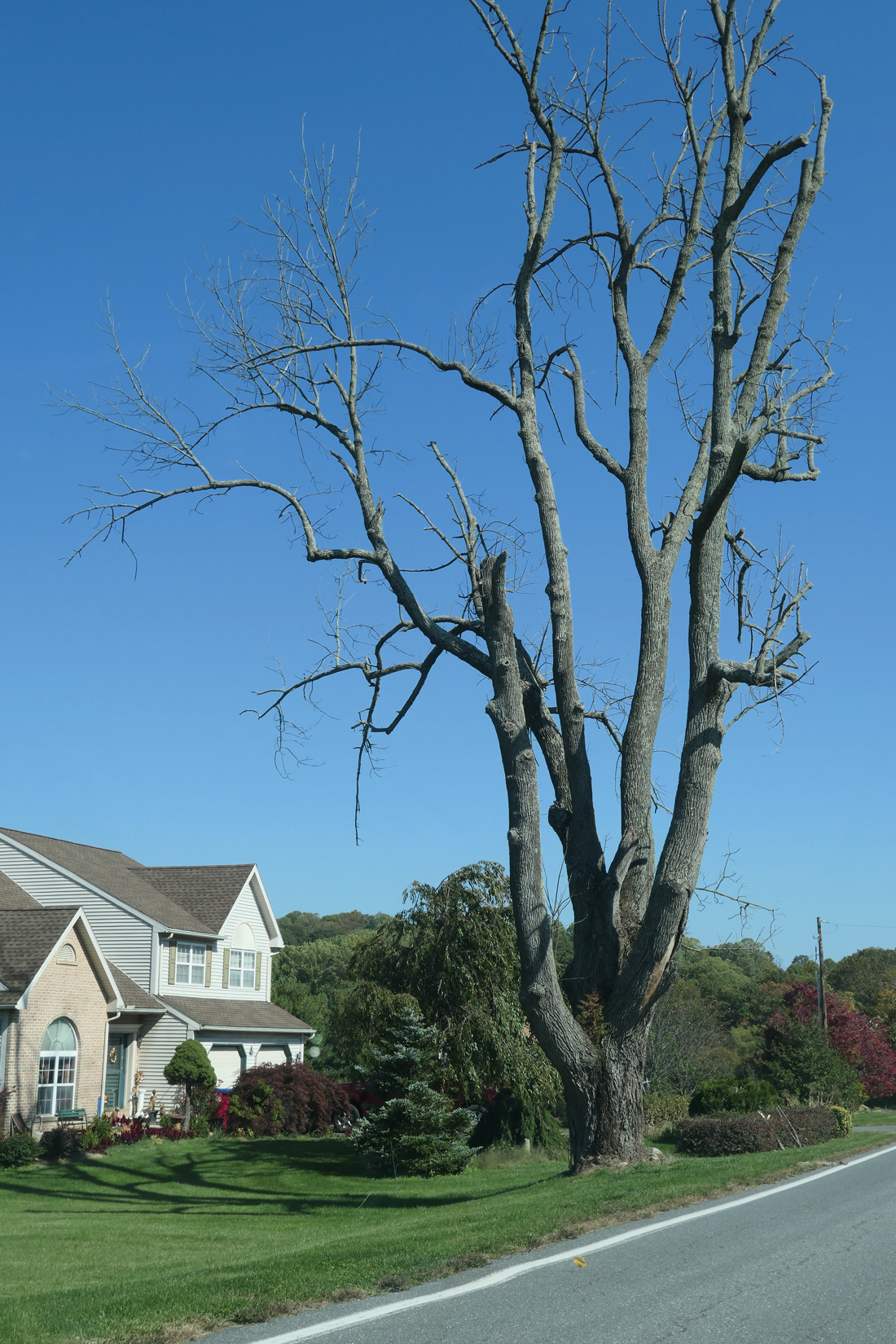
Ash trees that have fallen victim to the emerald ash borer can be seen in landscapes and woodlands across Lancaster County.
The tree is a multi-tasker, as the wood splits easily and has the ability to make a quick, hot fire with very little smoke and without being seasoned. The seeds provide food for many birds and small mammals. The leaves provide food for more than 100 species of butterflies and moths.
Studies are underway to identify individual trees that are resistant to the borer in order to develop breeding programs but hope is fading; in any event, it will certainly take decades.
Home Landscapes
Ash trees are also excellent choices as specimen yard trees for average home landscapes because they do well under a wide range of circumstances. The trees grow straight and tall in almost any soil and are often planted as street trees because of their ability to tolerate air-polluted conditions.
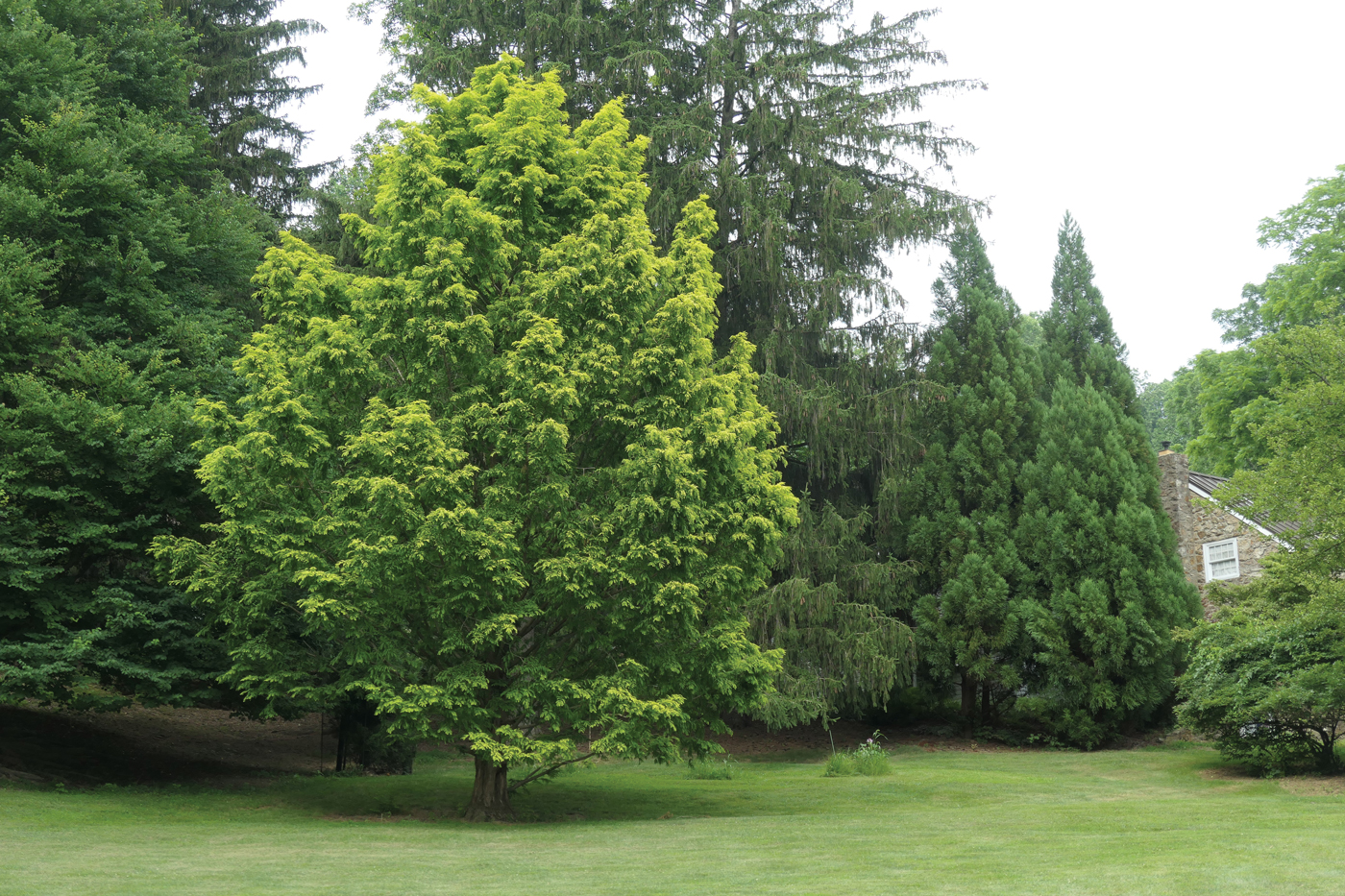
If time is of the essence, the dawn redwood is a perfect choice to take over an empty space on your property, as it grows as much as 4 feet per year.
The demise of ash trees has now become a reality in our home landscapes. While dead oaks or maples can often remain standing for several years, a dead ash collapses as its roots rot underground. As a result, utility companies are spending millions to take them down along streets and roadsides.
The situation has produced two issues for the home gardener: Removal and replacement of specimen trees on their property.
Removal
Damage inflicted by borers causes ash trees to split apart in sections, often in half, causing an ongoing chore of cleaning up debris after every episode of brisk winds. They eventually topple completely. Homeowners with a tree near a structure will have little choice but to remove it or risk inevitable damage because it will fall.
Don’t just call your cousin who has a chainsaw to remove it. Larger forked trees might require removal in sections. Climbing dead trees is hazardous. The use of cherry-picker equipment (properly called, I’m told, an aerial work platform) is often needed.
It is best to contact a certified arborist. As members of the International Society of Arboriculture (ISA), professionals must pass extensive examinations and keep abreast of developments by attending annual seminars. Visit their website, isa-arbor.com, to access the names of professionals in this area. When working with an arborist, ask for their ID to make certain you have the assistance of a recognized professional. Also, confirm that they are insured.
Replacement
In the June 2017, Gardening Journey, I provided important tips on selecting a tree at the nursery and essential advice on proper planting methods. I am now going to add to and modify the suggestions of replacement trees listed in the 2020 column. These trees will generally require the same space at maturity as your dead ash tree.
Red Maple Acer rubrum
Perfect for use as a lawn specimen tree. A moderately fast-growing choice for the widest range of growing conditions. It even tolerates wet sites. Many cultivars have been selected specifically for outstanding red fall color. This would likely be my choice if I could have only one shade tree. Not finicky, a red maple will grow!
Sugar Maple Acer saccharum
A beautiful and iconic shade tree but keep in mind it insists on rich soil with adequate moisture. It’s not a tree for stressful situations. The outstanding fall color display ranges from yellow to orange or red. It is the primary source of sap for production of maple syrup.
River Birch Betula nigra ‘Heritage’
Fast growing and nice as a specimen or in a grove, this cultivar has the usual bright-yellow fall color of birches. In winter, the bark is a major ornamental feature, as it sheds in papery sheets, revealing underlying shades of pink, cinnamon-brown, gray and white. It will grow along river banks or in generally damp areas. Be aware that this cultivar usually grows with multiple trunks, making it susceptible to storm/winter damage.
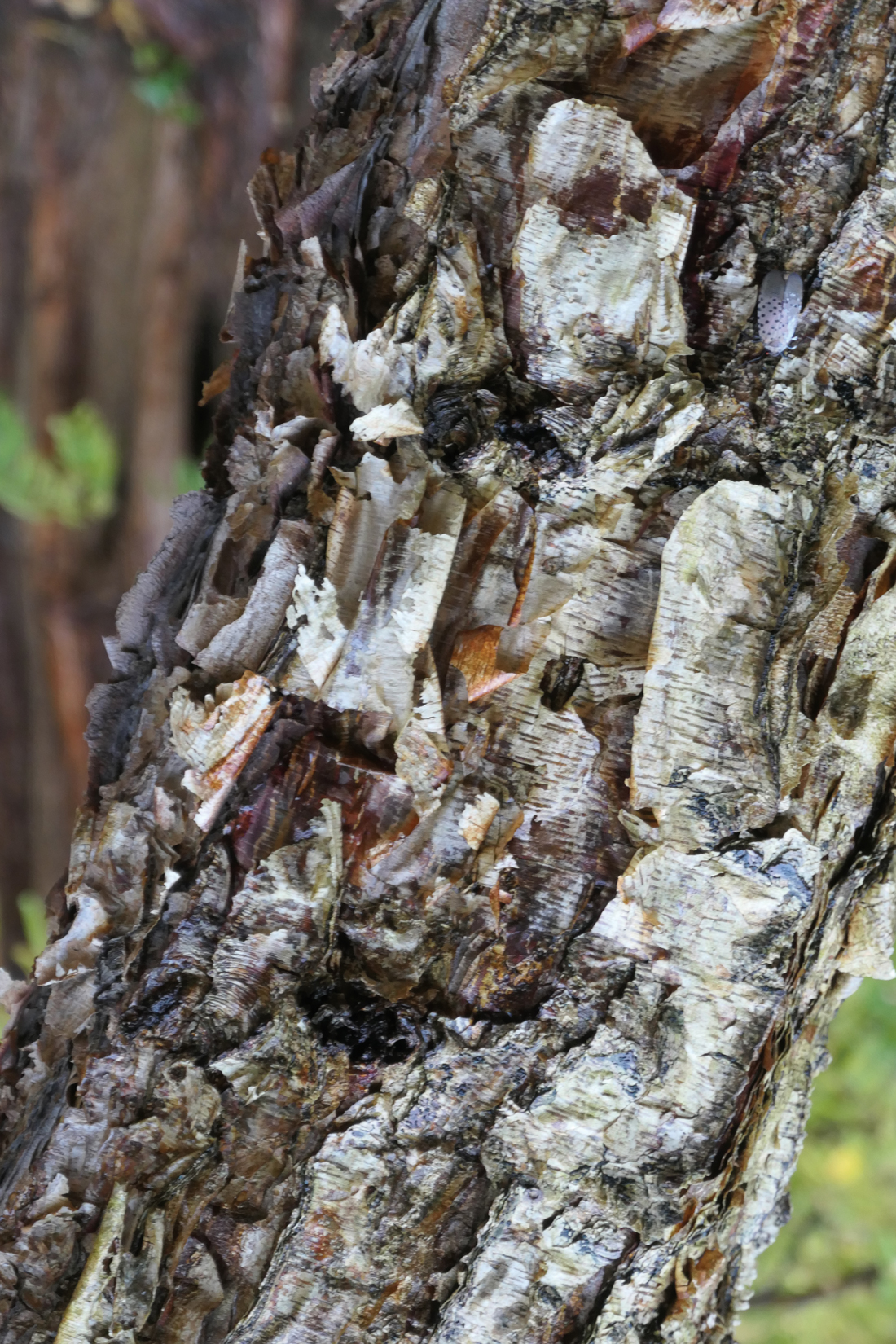
The bark of river birch trees becomes an attribute in winter; as the papery sheets are shed, underlying shades of pink, cinnamon-brown, gray and white are revealed.
American Sycamore Platanus occidentalis
This colossal tree is very adaptive to polluted urban areas and is among the fastest-growing of landscape trees. It is tolerant of wet soils and short-term flooding. The fall color is not showy but in all seasons the bark is eye-catching, exfoliating in browns, grays, greens, whites and creams.
Thornless honeylocust Gleditsia triacanthos f. inermis
Some would say it is overplanted but that is because it is an ideal option for lawns and streets, as it is tolerant of salt, wind and summer heat. The finely textured foliage provides filtered shade and displays attractive yellow fall color. Insist on this cultivar to be sure it is thornless and produces few seeds.
Sweetgum Liquidambar styractflua
An easily grown tree tolerant of various soil types and wet conditions. The fall color at its best is a brilliant mixture of yellows, oranges, purples and reds. However, sweetgum is not appropriate as a street tree because the gum-ball fruits are a litter problem in urban areas. They are also a hazard to bare feet unless you select a fruitless cultivar of this magnificent tree like ‘Rotundiloba’.
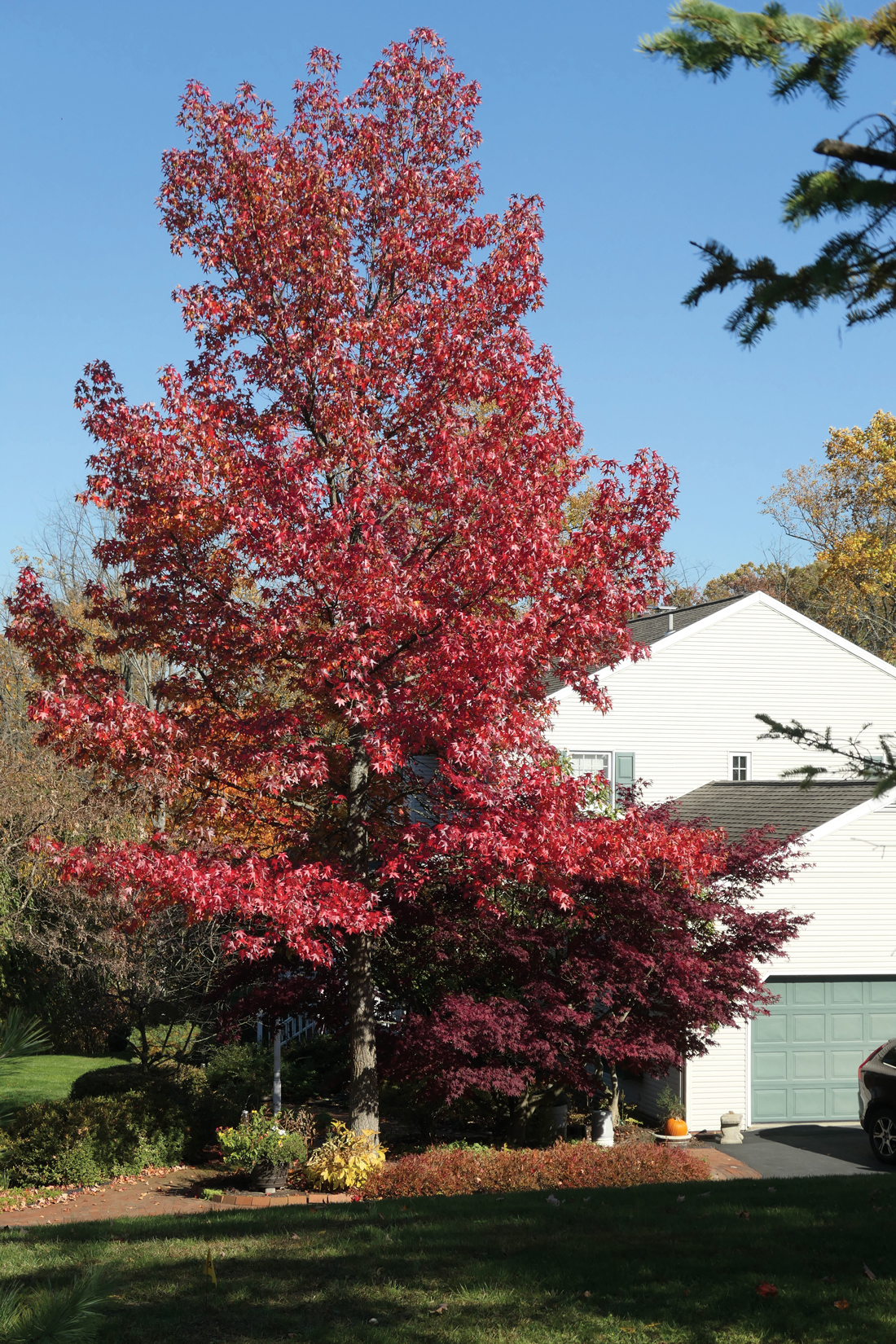
Sweetgum trees tolerate a variety of soil conditions and moisture levels. The fall color is outstanding.
Tuliptree Liriodendron tulipifera
This large and stately tree is widespread throughout Lancaster County woodlands, but it is an admirable fast-growing landscape tree, as well. It prefers a moist, well-drained area. The showy, magnolia-like, orange-banded yellow flowers are usually hidden by the foliage. Expect dependable yellow fall color.
Bald Cypress Taxodium distichum
A magnificent specimen tree with a flat crown, bald cypress is one of the few trees that can grow in deep, permanent, standing water. It is tolerant of drought when established. A deciduous conifer with fine-textured foliage and bronze fall color. They can live for over 2,000 years.
Dawn redwood Metasequoia glyptostroboides
Another deciduous conifer that is vigorous and will grow 4 feet a year. It has a very uniform habit, broad and conical with a single stem. The trunks become buttressed and irregularly fluted. It tolerates very wet soil and pollution. The fall color changes from a yellow-brown to pink, even apricot, then copper-brown. There is a golden cv. named ‘Ogon’.
American linden Tlia americana
A handsome large shade tree. Easily grown, although it will not thrive in urban pollution. It is notable for its showy ball-and-paddle flowers that appear in late spring and attract honey bees. Honey made from the nectar of these flowers is a prized gourmet item. The wood is highly desired by wood carvers.
A Caution About Oaks
I would like to recommend any oak since their acorns support more wildlife than any other tree. I have planted several recently. However, there are reports of an oak wilt disease caused by a fungus; so far it’s mostly west of the Susquehanna and not widely spread in this area. Nevertheless, it is obviously of concern. Currently it appears to be most damaging to the red oak group (northern red oak, black oak, scarlet oak, shumard oak). The white oak group (white oak, chestnut oak, bur oak) seems to be more resistant.
White oak Quercus alba
White oak grows in forests over much of eastern North America, but makes an exceptional shade tree for a large space. It has good drought tolerance. Perhaps the slow growth rate has somewhat tempered its popularity, making it difficult to find in nurseries. It displays a rich-brown fall color. The acorns are very palatable to a wide variety of wildlife and, of course, it is an important hardwood timber tree.
Evergreen Conifers
Conifers live for hundreds of years. They are often among the more expensive trees at the nursery. Because of the current climate trends with warming due to human activity, it makes little sense to plant conifers that originate in colder elevations. For example, do not select Colorado spruces (Picea pungens), Douglas-firs (Pseudotsuga menziesii and not actually a fir) or true firs (Abies spp.). They will do well for a decade or so and then go into decline.
Japanese-cedar (Cryptomeria japonica ‘Yoshino’)
This is my very-most-favorite conifer. I value it because of its graceful habit, shade tolerance and beautiful foliage. It can be sheared into a hedge or screen. Always plant a cultivar like ‘Yoshino’, which has lush green foliage year-round and retains its branches to the ground. It will grow 12 to 18 inches per year.
Thuga ‘Green Giant’ is a vigorous, fast-growing arborvitae hybrid (grows 3 to 5 feet per year) with a regular pyramidal habit and attractive foliage year-round. It is exceptional as a specimen tree or can be pruned into a hedge or screen. It is not subject to damage from snow and ice. It is a far superior to another popular fast-growing conifer, the Leyland cypress.
Just a note of caution: Those other dastardly invasives, the spotted lantern fly, are known to frequent and dine upon birch, beech, linden, tulip poplar and sweetgum trees.





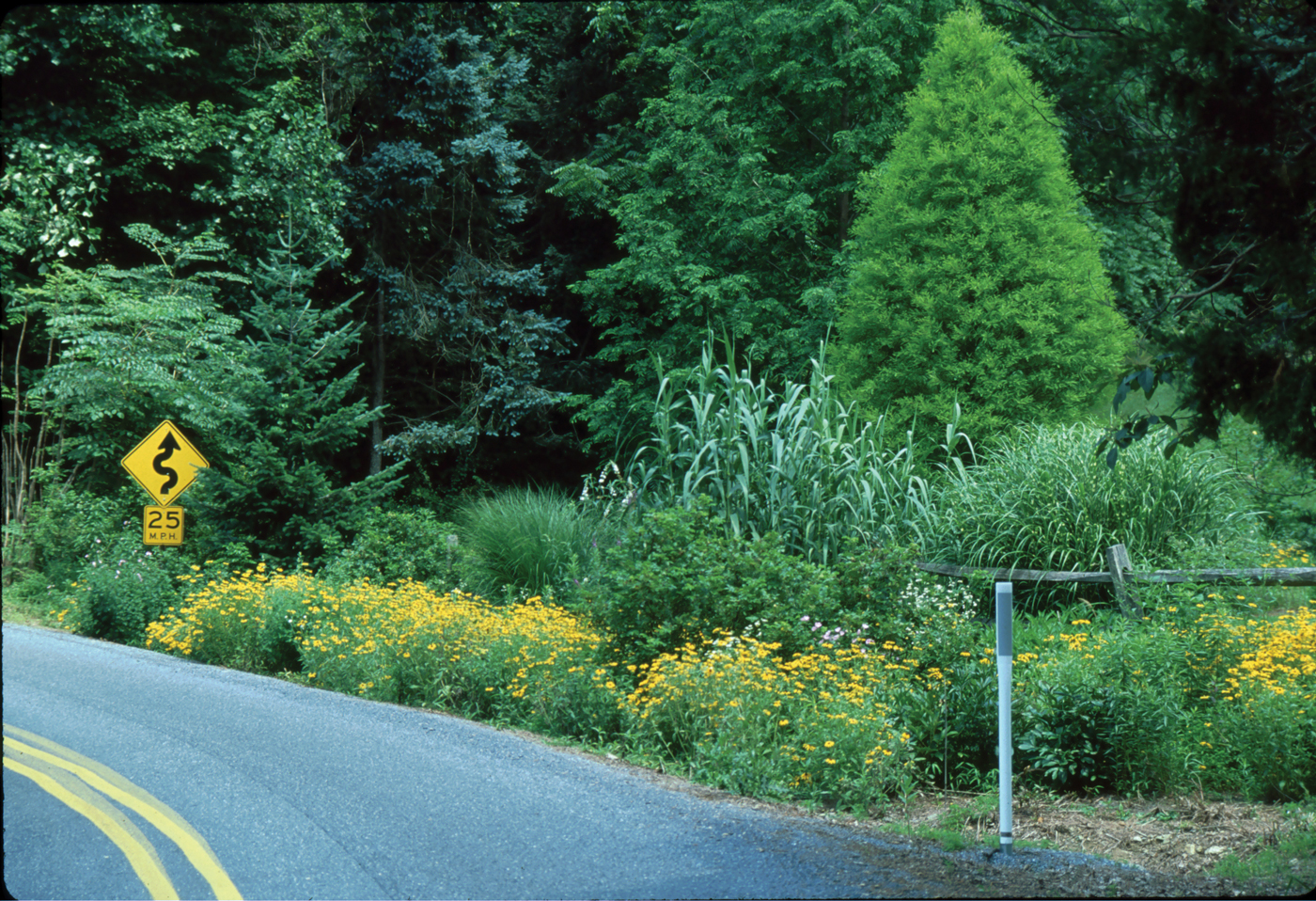
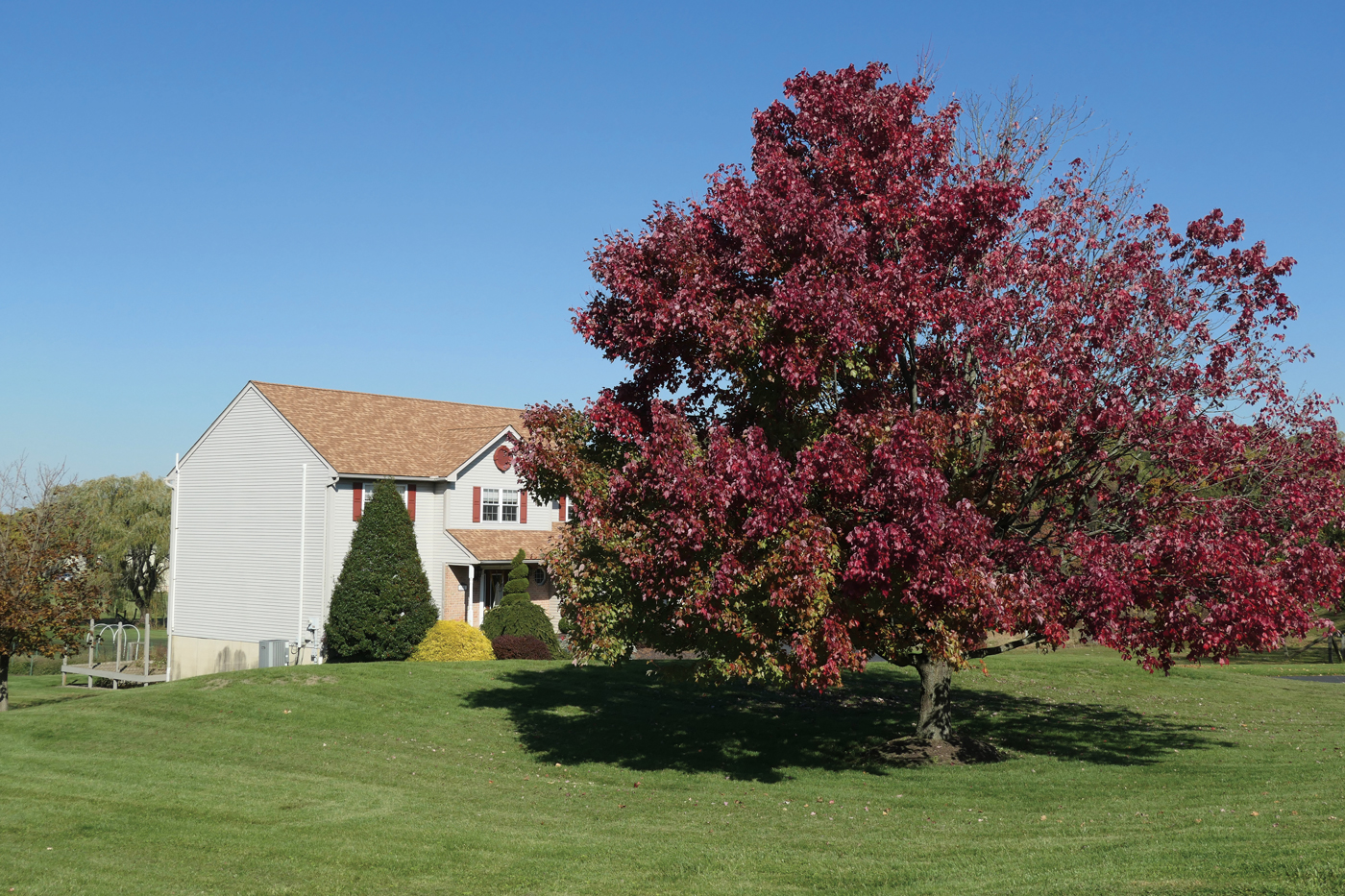
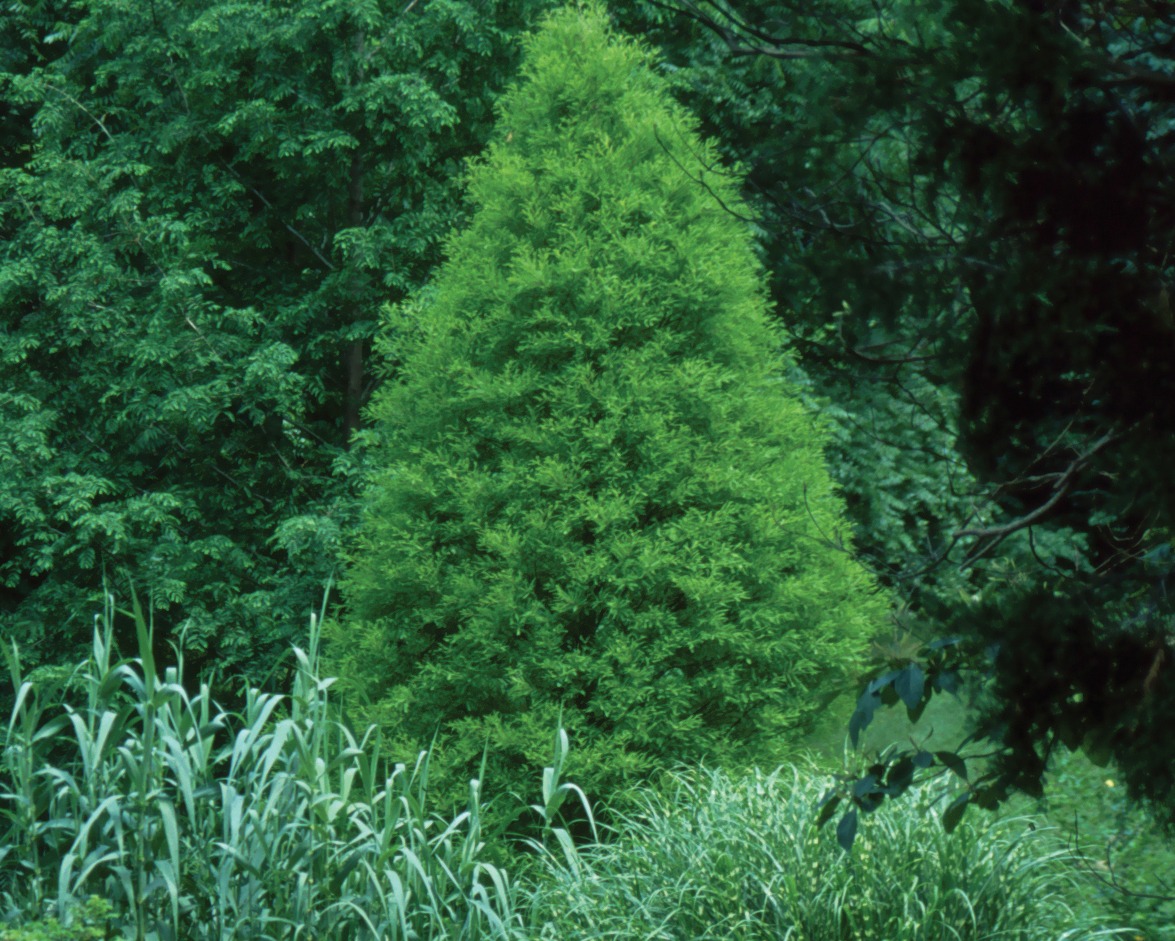
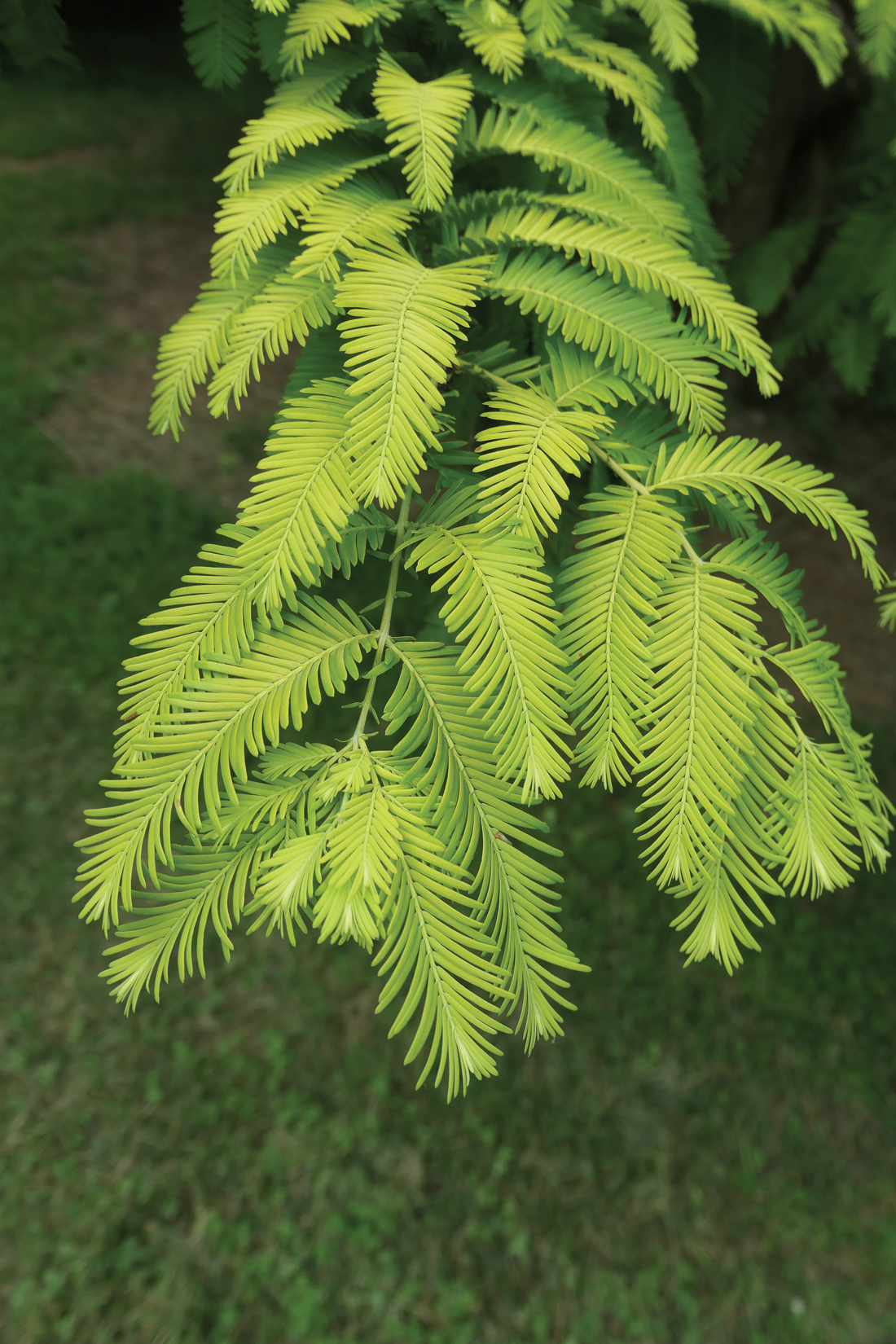
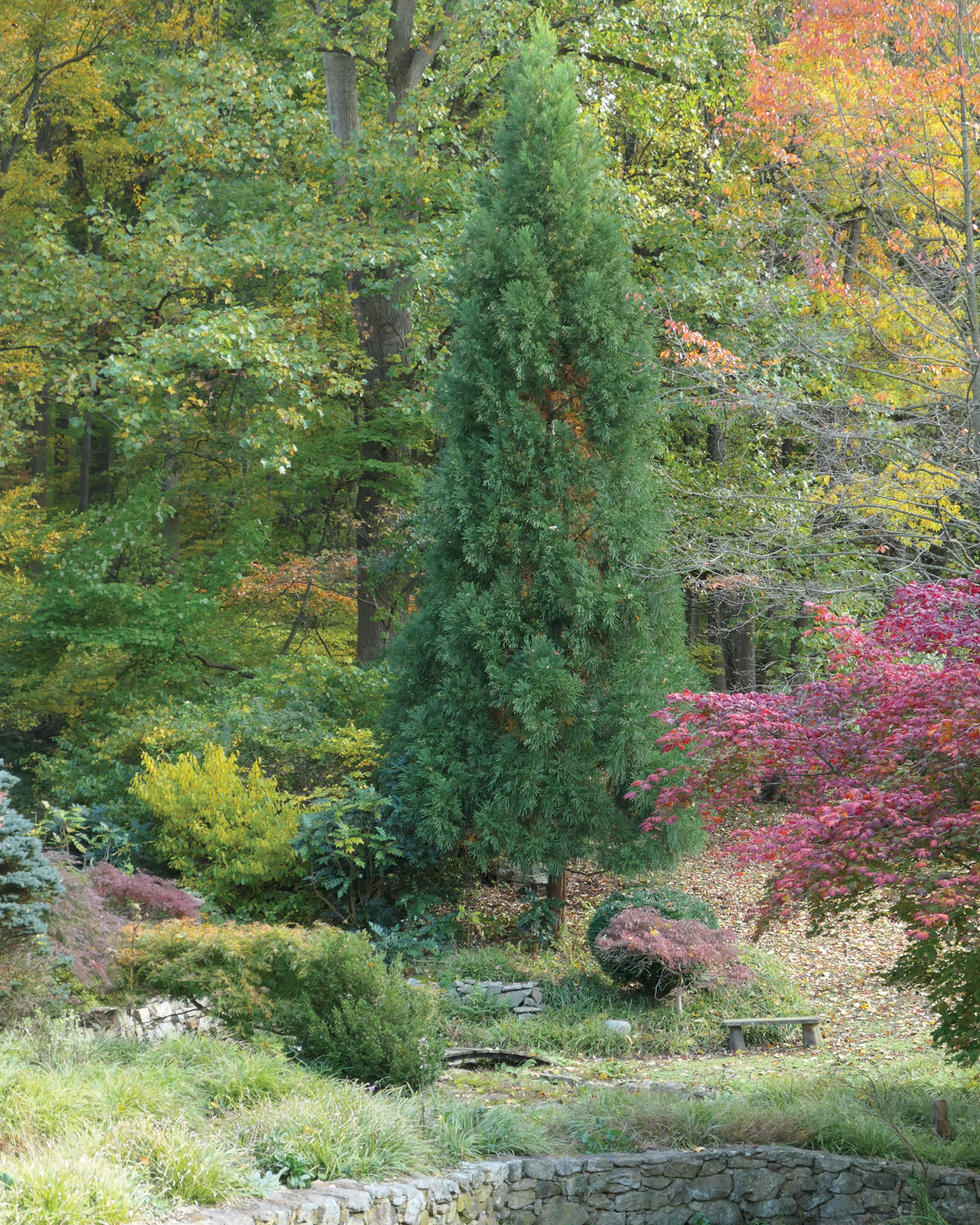
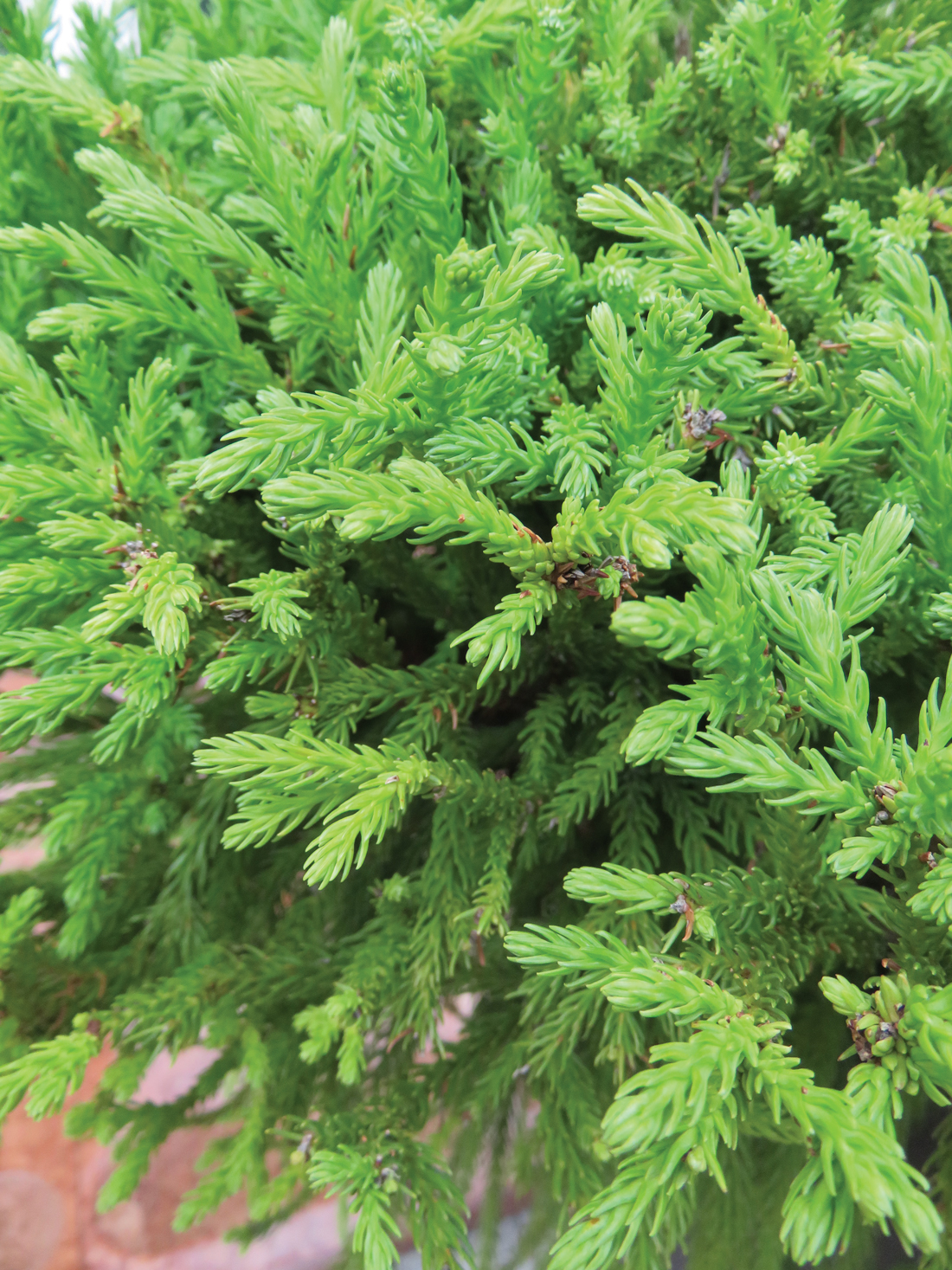
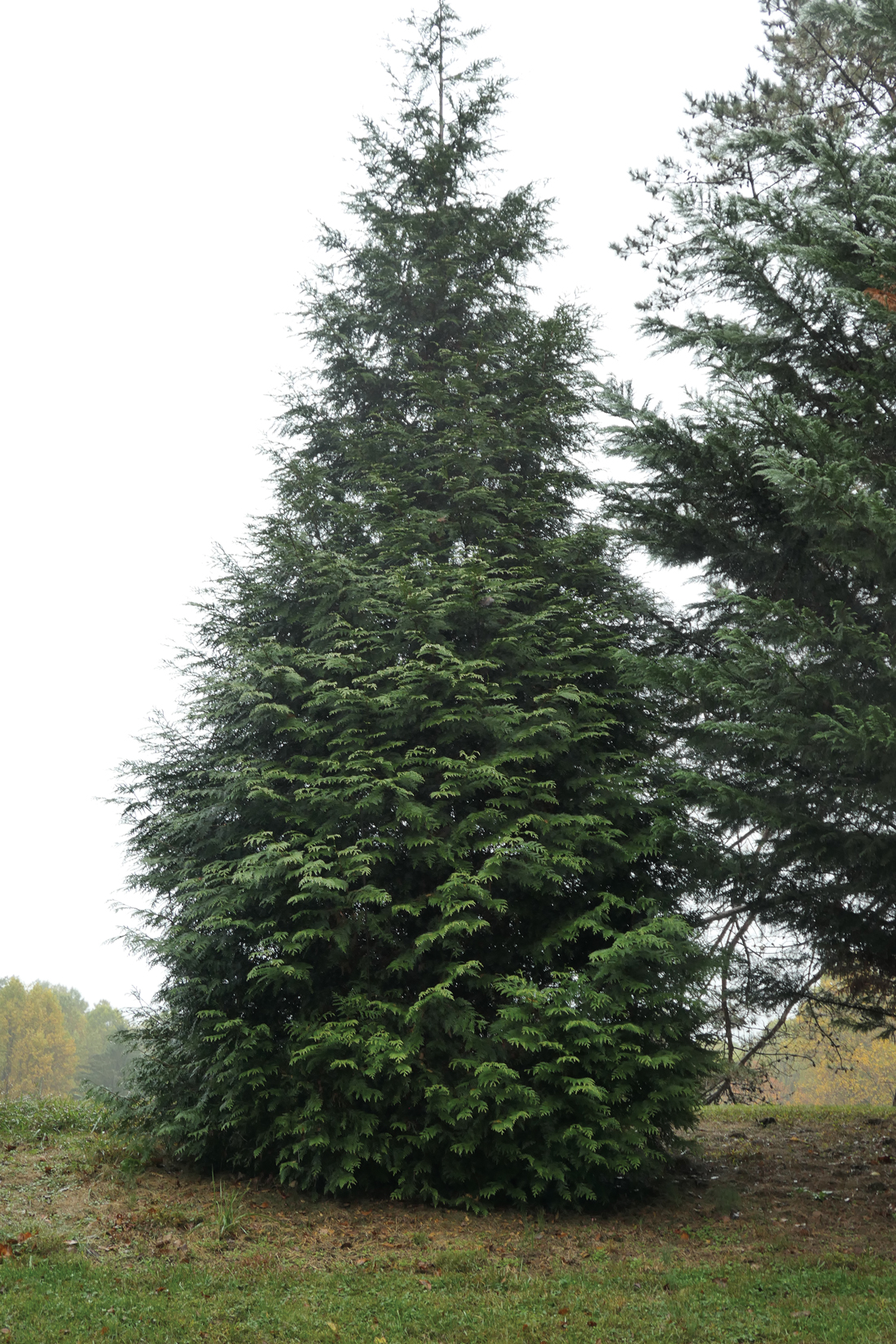
SHARE
PRINT